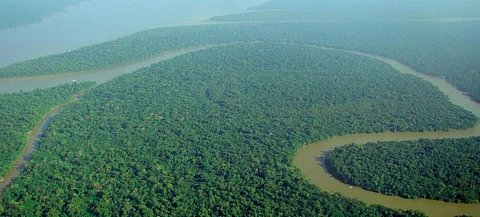

The world lost tropical forests roughly the size of Europe in the first two decades of this century, according to the Global Forest Resources Assessment Remote Sensing Survey (FRA 2020 RSS), released May 3, 2022 by the United Nations.
Cropland expansion, palm oil plantations and livestock grazing were a few of the biggest threats to tropical forests in South America and Asia, the report, released by the UN’s Food and Agriculture Organization (FAO), said.
“Cropland expansion (including oil palm plantations) is the main driver of deforestation, causing almost 50 per cent of global deforestation, followed by livestock grazing, accounting for 38.5 per cent. Oil palm alone accounted for seven per cent of the global deforestation from 2000 to 2018,” the report stated.
FAO Deputy Director-General Maria Helena Semedo said unsustainable agricultural development and other land uses continued to put intense pressure on the world’s forests, especially in many of the poorest countries.
She added that there were win-win solutions which can and must be scaled up to feed the world without destroying forests. “Agriculture is the main driver of deforestation in all regions except Europe, where the combined impact of other drivers was higher.
“Conversion to cropland dominates forest loss in Africa and Asia, with 75 per cent of the forest area lost converted to cropland. In South America, three quarters of deforestation was due to livestock grazing,” the report read.
It added that South America lost around 68 million hectares — the highest in the world, followed by Africa with 49 million hectares.
The report stated that tropical forests accounted for more than 90 per cent of the deforestation from 2000 to 2018.
This although the rate of disappearance of forests slowed down by 30 per cent in 2010-18, compared to the first decade of the century. It decreased to seven million hectares per year in 2010-2018, from 10.1 million hectares per year in 2000-2010.
FRA 2020 RSS further stated that net forest losses fell to 3.1 million hectares per year in the period 2010-2018, as compared to 6.8 million hectares in 2000-2010.
“Annual deforestation decreased by around 29 per cent to 7.8 million hectares per year in the period 2010-2018, from 11 million hectares per year in the decade 2000-2010,” it said.
“This survey is important, not just for the new numbers it gives us but for what it tells us about forest area trends and what’s driving deforestation. It is also important for the crucial ability it gives us to monitor how things are evolving,” Semedo said.
The report stated that global annual forest area gain increased slightly to 4.7 million hectares per year in 2010-2018, from 4.2 million hectares per year in the first decade of the century.
However, it also observed that planted forest area increased by 46 million hectares in the period 2000-2018.
“Almost one-quarter of forests planted in this millennium replaced naturally regenerating forests, with half of this area in South and Southeast Asia,” the report said.